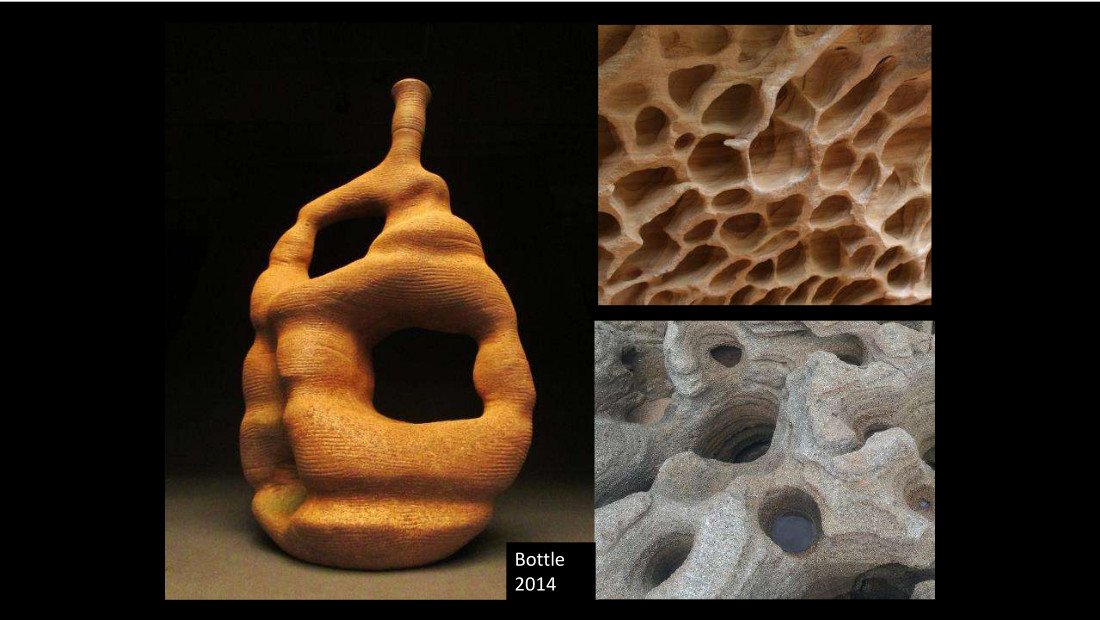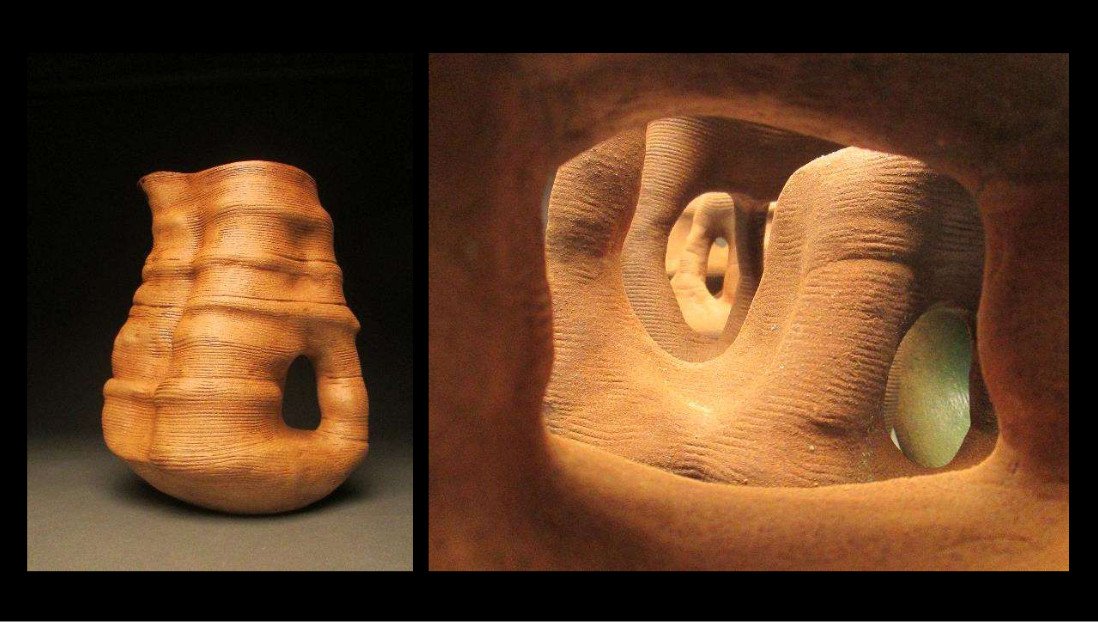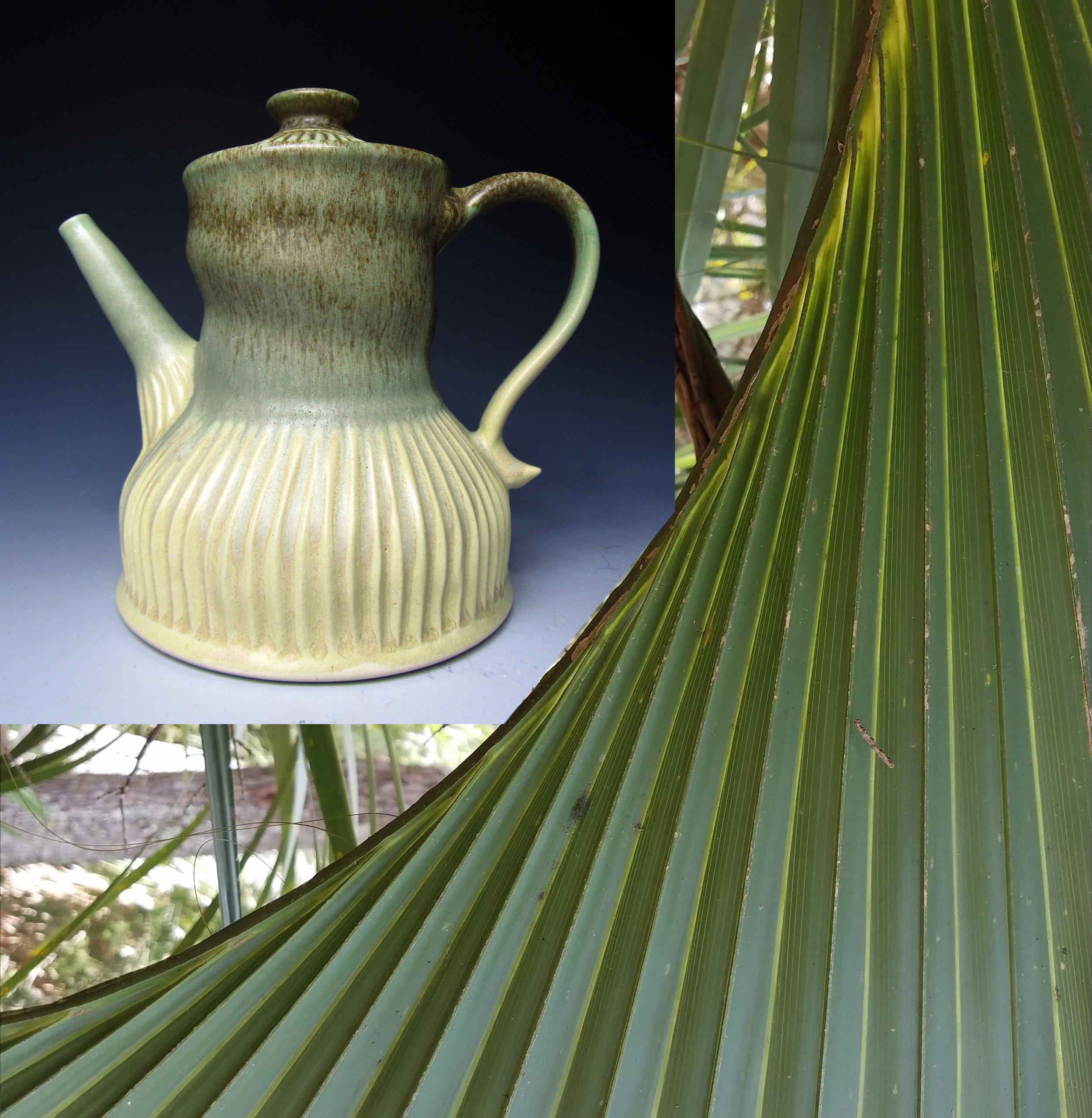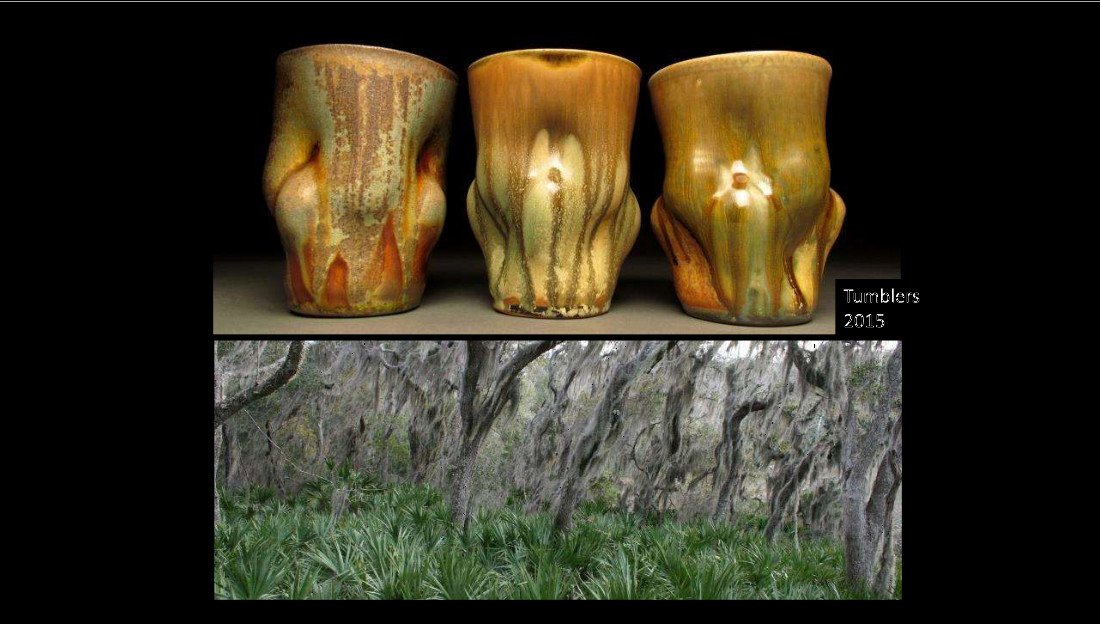Local Influence
The natural beauty of the estuarine and hammock environment of the North East Florida coast deeply impacted me at an early age. Especially beautiful are the delicate plants, mosses, and fungi which showcase the great diversity of shapes and colors that are inherent to the flourishing of these elegant flora. The gentle and earthy color palette of the swamp merging with the forest floor is at once rich and full of life as well as hushed and sedate. Capturing the intrinsic beauty of color and form found in the sandy hammock environments just upland of the salty estuaries, the quiet forms are organic and allow for a diversity of surface treatments that bless the piece with anonymity of process and eternal variation.
Local Clay
Finding the Source
Roadside ditch showing clay at the water line. FL
Hillside strata where I harvested clay in grad school. KS
Upon my return to Florida, after grad school, I began the hunt for a source of local clays excited by my success in Kansas. There is much less topographical variation in my part of Florida and road-cuts through hills do not exist because we lack hills... Therefore, I began by asking community members from my childhood and eventually called every dirt/excavation company in the county. During my research I also came across several old publications by the University of Florida on the economic suitability of soil resources for each county in the state. This publication mentioned several clay deposits in my area but the suitability was limited to “unvitrified brick” A final source of information was a series of calls with city and county historical societies where I heard stories of abandoned brick factories.
All of this information intrigued me but none of the dirt companies had open pits with clay and none of the other stories were attached to identifiable locations. After chatting with my Dad who has experience with GIS mapping I checked out the USDA National Resource Conservation Service (NRCS) Web Soil Survey website. Armed with this online search tool and anecdotal directions I was able to narrow my search and make some more phone calls.
Eventually, after receiving permission to check some ditches in a rural community, I took my boots and shovel and began the prospecting phase of the search. Finally, after months of homework I found clay!
It turns out that while the clays in Kansas may have been secondary, the coastal Florida clays are very sandy worked through with roots and limestone concretions. During my conversations, I learned the vernacular term for this clay is “gumbo” and there are two explanations for this. Ether because the mottled grey/blue/yellow colors of the clay in the ground resemble gumbo (the food) or because it “gums” up the excavators. Essentially, it is a sticky-sandy ball clay full of organics and fires to a very loose, unvitrified matrix after the organics burn out. Even at cone 12, in the front of an anagama, a raw clay vessel will remain porous if there was not the thickest of ash accumulations
Woodfiring
Three SWS Woodfire Clay plates fired upside down and without glaze showing the marks of the ash-glaze and refractory wadding.
Rooted in the discovery of porcelain in Jingdezhen, China, kilns have been fired with wood for millennia. Originally the accumulation of wood ash was undesirable and something to be avoided. As time has progressed and techniques have changed, combinations of clay and ash have been found to create their own glaze at high temperatures for extended time. In a single firing, we fire for approximately 80 hours consuming just shy of 4 cords of wood.
The St. Augagama
Built in 2024 and derived from the Japanese tradition of an Anagama (translating to “Cave Kiln”) style of firing, the St. Augagama is approximately 20 feet long with an interior stacking space of 140 cubic feet in the main chamber. With a firebox on the east end and chimney on the west, the ash from the burning wood is drawn through the pottery and deposited onto the surface of the ware creating the glaze layer through the fluxing power of the ash on the silica in the clay. A unique feature of our kiln is a secondary ‘sutema” chamber between the main chamber and the chimney. This second chamber acts as an after-burner and combusts any remaining smoke in the effluent making the kiln overall a smokeless wood kiln! An added feature of the sutema chamber is the ability to treat it as an entirely separate atmosphere. This allows us to salt the kiln with an application of seawater from the bay while the kiln is at top temperature.
Built in 2024 and derived from the Japanese tradition of an Anagama (translating to “Cave Kiln”) style of firing, the St. Augagama is approximately 20 feet long with an interior stacking space of 140 cubic feet in the main chamber. With a firebox on the east end and chimney on the west, the ash from the burning wood is drawn through the pottery and deposited onto the surface of the ware creating the glaze layer through the fluxing power of the ash on the silica in the clay. A unique feature of our kiln is a secondary ‘sutema” chamber between the main chamber and the chimney. This second chamber acts as an after-burner and combusts any remaining smoke in the effluent making the kiln overall a smokeless wood kiln! An added feature of the sutema chamber is the ability to treat it as an entirely separate atmosphere. This allows us to salt the kiln with an application of seawater from the bay while the kiln is at top temperature.
We use a blend of local Saint Johns County clays and a commercially mixed recipe of our own. This porcelaneous recipe is developed from research I conducted in grad school based on a CoorsTek analysis of the local clay I was harvesting in western Kansas. It’s a cream-firing, highly plastic throwing body, with a small percentage of fine grog added to lend some tooth. The high silica content in the body facilitates ash accumulation and performs exceptionally well in fly ash and sodium atmospheres. The local clay, glazed with locally harvested wood ash and seawater from the bay makes each work intimately connected to this place.








